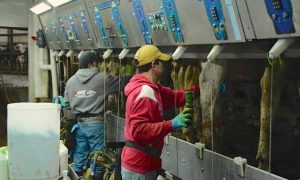
Speaking with one dairy producer in Riverdale, California, Maddox Dairy milks 4,000 cows, with an equal number of heifers. Part of the water system the farm uses includes the Stinson Irrigation District in Fresno County. The company has told its members not to expect any water this year.
Maddox Dairy says most farms in Fresno County have their own wells. The owner, though, made the decision to fallow a third of his 1,800 acres of corn silage cropland due to water restrictions. That means, he will have to purchase more feed in a year when feed prices are rising. He estimates his feed costs will increase by up to 25%.
Farm Safety
We know that farming can be a dangerous job at times, and dairy farmers face even more hazards due to animals, feed and on-farm chemicals. Now OSHA is identifying the top 12 safety concerns on dairies. It calls them the “dairy dozen”.
They include manure storage, dairy bull and cow movement, electrical systems, skid steer loader, tractor operation, along with on-farm chemicals and noise. Hazardous chemicals are often found on dairy farms. They can include teat dips, sanitizing acids and detergents, along with oil-based paint and diesel fuel.
OSHA reports nearly one-third of employees they interviewed during recent inspections of more than 100 dairy farms said they were not informed about the hazards of the chemicals they used.























